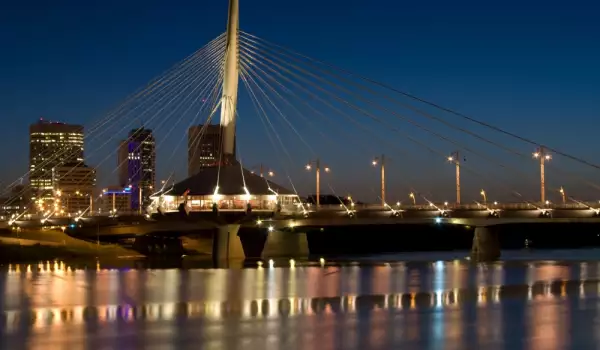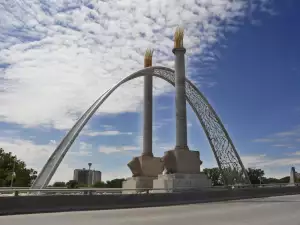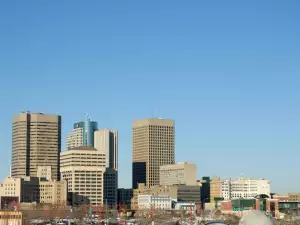Winnipeg

Winnipeg is the capital of the famous Canadian province of Manitoba. The name Winnipeg comes from the local word for muddy water. The area of Winnipeg was a commercial center for locals before the arrival of Europeans. The first fort in the area was built in 1738 by French traders. Later the village was founded and in 1873 Winnipeg received city status.
In the late nineteenth and early twentieth century Winnipeg was among the fastest growing cities in North America. The university of Manitoba, which was founded at the time, was the first university established in Western Canada. Winnipeg has about 633 000 people.
Winnipeg's economy is based on the financial sector, manufacturing, food industry, tourism and real estate. Winnipeg is a major transportation center that serves the international airport Richardson.

Winnipeg is located at the intersection of Red River and Assiniboine, where the canoes of the locals passed. The area is known as a fork.
The Petroglyphs that prehistoric people have left, testify that they made their living by hunting, fishing and agriculture. Here people lived, known as the First Nations. Before the Europeans, the first Nations’ people engaged in farming along the Red River and grew corn and other crops. On the river, food supplies could be transported. This way, they contacted the tribes Anishinaabe, Assiniboine and Cree.
Red River connects individuals from the north to the south along the rivers Missouri and Mississippi. At that time, the first maps of the river werethe drawn on birch bark, which helped people to orientate themselves during the voyage down the river.
The first French officer, who arrived in the region in 1738, was Sieur de La Vérendrye. He built the first trading post for fur trade, and called it Fort Rouge. Many Frenchmen and later, many British, married women from the First Nations. Metis, born of these mixed marriages undertook subsistence hunting and trade in the region.

In the late seventies of the nineteenth century, Winnipeg became the seat of the Red River uprising, which was a conflict between the Government of mixed races, led by Louis Riel, and the newly arrived settlers from eastern Canada. As a consequence of this revolt, the Manitoba act appeared in 1870, which paved the way for the entry of Manitoba into the Canadian Confederation.
Since the advent of the railroad in 1881, Winnipeg began rapidly to develop. Many buildings were built, including the Manitoba government building, whose dome is decorated with a bronze statue covered with gold leaf, known as the golden boy. Many parcels of land were sold and property prices increased significantly.
In 1914 with the opening of the Panama Canal, Winnipeg faced financial difficulties as it reduced the capacity of the railway as a system for international trade. As a result, the market for real estate collapsed.
In 1919 over thirty thousand workers went on strike. After many arrests, the violent strike ended June 21, it became known as Bloody Saturday for the killing of two strikers and the many wounded.
In the battle for Hong Kong, grenadiers of Winnipeg were among the first Canadians to join the battle against Japan. In 1950, the city was flooded by severe flooding as water levels did not drop for fifty-one days. Four of urban bridges were destroyed and one hundred thousand people were evacuated from the city. Damage was estimated at over twenty six million dollars.
In 1953, Manitoba was struck by an epidemic of polio. There were over two thousand three hundred cases of illness from the insidious disease and eighty people died. In the late eighties of the twentieth century, Winnipeg experienced a strong recession. In the early nineties two hundred seventy-one million dollars were voted for the development of downtown.








